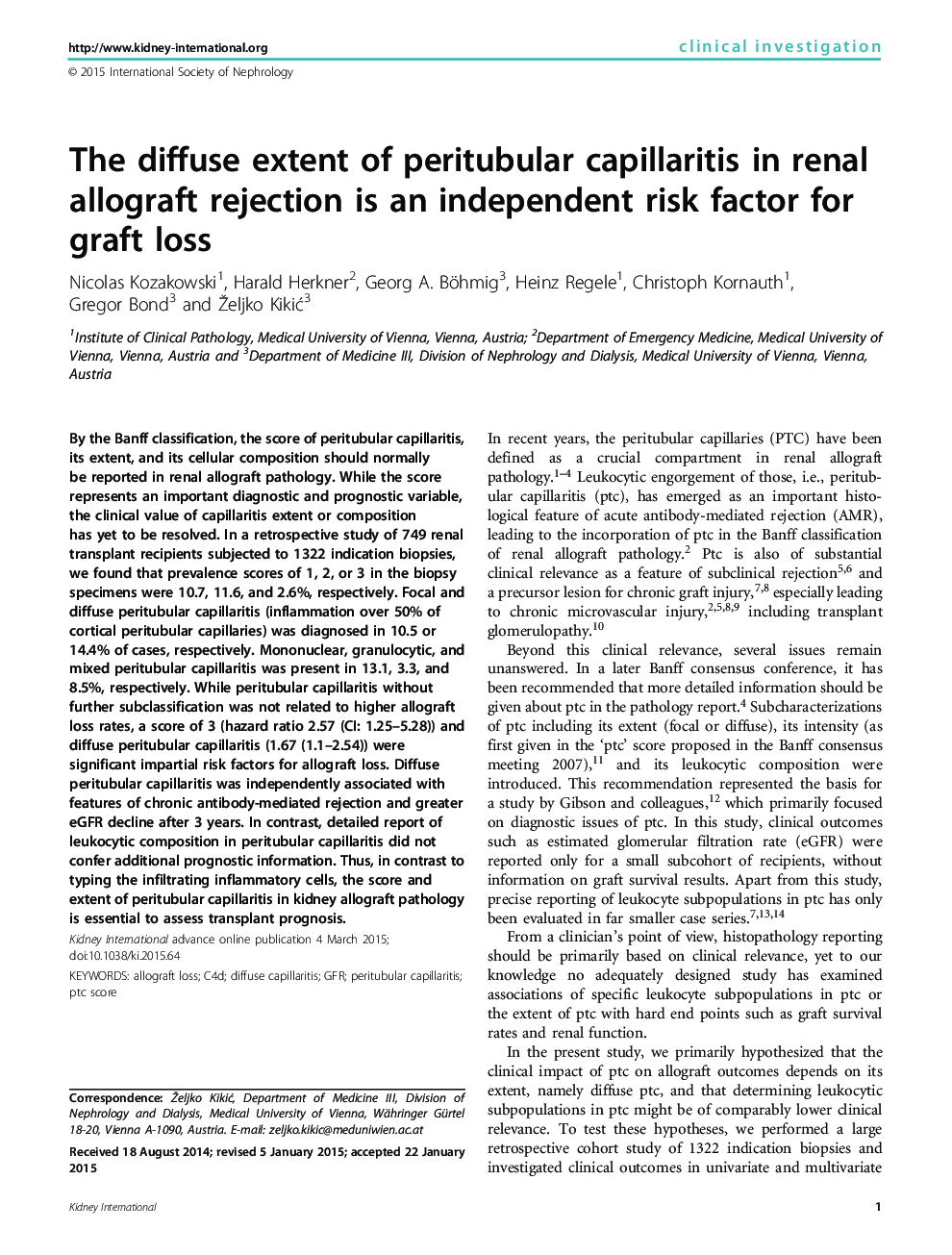| Article ID | Journal | Published Year | Pages | File Type |
|---|---|---|---|---|
| 6161339 | Kidney International | 2015 | 9 Pages |
Abstract
By the Banff classification, the score of peritubular capillaritis, its extent, and its cellular composition should normally be reported in renal allograft pathology. While the score represents an important diagnostic and prognostic variable, the clinical value of capillaritis extent or composition has yet to be resolved. In a retrospective study of 749 renal transplant recipients subjected to 1322 indication biopsies, we found that prevalence scores of 1, 2, or 3 in the biopsy specimens were 10.7, 11.6, and 2.6%, respectively. Focal and diffuse peritubular capillaritis (inflammation over 50% of cortical peritubular capillaries) was diagnosed in 10.5 or 14.4% of cases, respectively. Mononuclear, granulocytic, and mixed peritubular capillaritis was present in 13.1, 3.3, and 8.5%, respectively. While peritubular capillaritis without further subclassification was not related to higher allograft loss rates, a score of 3 (hazard ratio 2.57 (CI: 1.25-5.28)) and diffuse peritubular capillaritis (1.67 (1.1-2.54)) were significant impartial risk factors for allograft loss. Diffuse peritubular capillaritis was independently associated with features of chronic antibody-mediated rejection and greater eGFR decline after 3 years. In contrast, detailed report of leukocytic composition in peritubular capillaritis did not confer additional prognostic information. Thus, in contrast to typing the infiltrating inflammatory cells, the score and extent of peritubular capillaritis in kidney allograft pathology is essential to assess transplant prognosis.
Related Topics
Health Sciences
Medicine and Dentistry
Nephrology
Authors
Nicolas Kozakowski, Harald Herkner, Georg A. Böhmig, Heinz Regele, Christoph Kornauth, Gregor Bond, Željko KikiÄ,
